
In his letters, Heaney weighed his competing obligations as a poet.
When people asked the poet Seamus Heaney what it was like to be living in Belfast, Northern Ireland, at the start of the Troubles, he tended to downplay the violence: “Things aren’t too bad in our part of the town.” But things were, in fact, quite bad. A kind of martial law obtained. British soldiers, brought in to suppress a Catholic civil-rights movement, ran checkpoints, frisked young men, and stopped drivers for the smallest infractions. Aggressive slogans adorned buildings: “Keep Ulster Protestant,” “Keep Blacks and Fenians Out of Ulster.” Worst of all were the bombs, which exploded everywhere and seemingly at random: in department stores, in transit centers, in pubs, in banks. Some were planted by the Provisional Irish Republican Army, others by Protestant vigilantes.
These developments alarmed Heaney the citizen—a lifelong Northerner, an Irish Catholic—and they challenged Heaney the poet. Should he, in his art, respond to the conflict—and, if so, how? To write his first two, well-received collections, he had started in what he called “the ground of memory and sensation,” often with scenes drawn from domestic life. Poems typically appeared to him spontaneously, like figures emerging from a mist. “It would wrench the rhythms of my writing procedures to start squaring up to contemporary events with more will than ways to deal with them,” he wrote in the Guardian in 1972, as the violence in the North was escalating.
This story is from the September 09, 2024 edition of The New Yorker.
Start your 7-day Magzter GOLD free trial to access thousands of curated premium stories, and 9,000+ magazines and newspapers.
Already a subscriber ? Sign In
This story is from the September 09, 2024 edition of The New Yorker.
Start your 7-day Magzter GOLD free trial to access thousands of curated premium stories, and 9,000+ magazines and newspapers.
Already a subscriber? Sign In
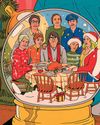
YULE RULES
“Christmas Eve in Miller’s Point.”
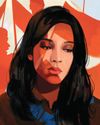
COLLISION COURSE
In Devika Rege’ first novel, India enters a troubling new era.

NEW CHAPTER
Is the twentieth-century novel a genre unto itself?

STUCK ON YOU
Pain and pleasure at a tattoo convention.

HEAVY SNOW HAN KANG
Kyungha-ya. That was the entirety of Inseon’s message: my name.
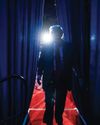
REPRISE
Reckoning with Donald Trump's return to power.
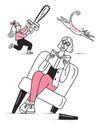
WHAT'S YOUR PARENTING-FAILURE STYLE?
Whether you’re horrifying your teen with nauseating sex-ed analogies or watching TikToks while your toddler eats a bagel from the subway floor, face it: you’re flailing in the vast chasm of your child’s relentless needs.

COLOR INSTINCT
Jadé Fadojutimi, a British painter, sees the world through a prism.
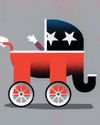
THE FAMILY PLAN
The pro-life movement’ new playbook.
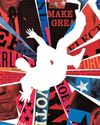
President for Sale - A survey of today's political ads.
On a mid-October Sunday not long ago sun high, wind cool-I was in Harrisburg, Pennsylvania, for a book festival, and I took a stroll. There were few people on the streets-like the population of a lot of capital cities, Harrisburg's swells on weekdays with lawyers and lobbyists and legislative staffers, and dwindles on the weekends. But, on the façades of small businesses and in the doorways of private homes, I could see evidence of political activity. Across from the sparkling Susquehanna River, there was a row of Democratic lawn signs: Malcolm Kenyatta for auditor general, Bob Casey for U.S. Senate, and, most important, in white letters atop a periwinkle not unlike that of the sky, Kamala Harris for President.